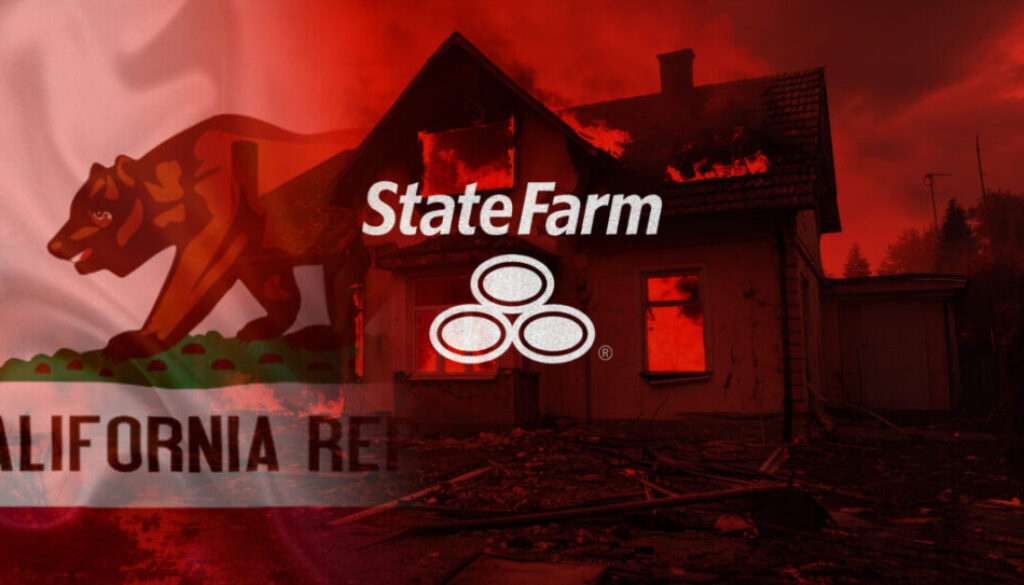‘Tough decisions’ on the way as California grapples with insurance crisis

Nearly six months after a series of devastating wildfires, California’s property insurance crisis is far from stabilized.
Many market participants are focused on the next climate-fueled disaster – be it more wildfires or an earthquake. The Golden State’s property insurance market simply cannot continue without major reforms, experts say.
“The home insurance market is in a state of crisis,” reads a new report from Deep Sky, a Canadian carbon removal project developer. “The highest risk areas of California have effectively become uninsurable and will soon become unaffordable. … Without significant policy intervention, these properties will eventually become worthless.”
The report, titled “Wildfires 2025,” shows insurers abandoning homeowners in the highest-risk areas, with over 150,000 households now uninsured in California’s most fire-prone regions alone. Home insurance premiums have shot up 42% in those areas.
In January, 14 separate wildfires destroyed more than 18,000 homes and structures, and burned over 57,000 acres from San Diego to Los Angeles. The Eaton and Palisades fires were the second- and third-most destructive wildfires in California’s history, respectively.
An AM Best special report shows a $1.1 billion net underwriting loss in the first quarter for the U.S. property and casualty insurance industry, compared to a $9.4 billion net underwriting gain in Q1 2024. The loss was mainly due to the California wildfires, AM Best concluded.
The wildfires cost insurers dearly, a short-term issue leading to an emergency 17% rate hike granted to State Farm. In exchange, the carrier committed to refraining from a new round of nonrenewals through the end of 2025. State Farm Mutual agreed to make a $400 million capital infusion into State Farm.
“We are in a statewide insurance crisis, affecting millions of Californians,” Insurance Commissioner Ricardo Lara said. “Taking this on requires tough decisions. This is not a game.”
That tough decisions are coming is one point everyone agrees with.
Proposition 103
Any discussion of property insurance rates in California begins with Proposition 103, which passed in 1988. It required insurance companies to roll back rates by 20% and that any future rate hikes be approved by the state insurance department.
The Personal Insurance Federation of California, which represents property insurance companies, said Prop 103 created “rate disparities” between California and the rest of the United States.
Between 2010 and 2020, California’s average insurance premiums increased by 28.3%, the PIFC said. The rest of the U.S. saw a 34% increase during that time. Colorado, a state with similar historic losses in wildfires, saw its insurance premiums increase by 73.5%.
“The ongoing impacts of climate change on California’s wildlands continue to create critically dry fuel conditions and longer, more severe fire seasons,” the PIFC notes on its website.
Not surprisingly, consumer groups see it differently. State Farm seeks a second 11% rate hike to help it offset wildfire losses. If approved, the average Californian policyholder will be paying $1,015 more for homeowners insurance in 2026 than they did in 2023, according to a new analysis from the Center for Climate Integrity.
“The insurance crisis is a direct result of the climate crisis that Big Oil has caused,” said Richard Wiles, president of the CCI. “Before insurers raise rates, they should stand up for their policyholders and fight to recover damages from the fossil fuel corporations whose climate pollution, obstruction, and disinformation are driving up costs for Californians.”
Lara aims to massage the climate issue via his Sustainable Insurance Strategy. The package offers several proposals to stabilize insurance markets. Notably the inclusion of “catastrophe modeling and California-only net costs of reinsurance in rate-making.”
“They’re allowed to use computer modeling to set premiums for wildfire risk across the state … as long as those insurance companies wrote 85% of the policies in fire-prone areas,” explained Derek Chaiken, a lawyer with Merlin Law Group specializing in property insurance recovery. “So, obviously using new modeling is going to cause rates to go up.”
How FAIR is it?
California homeowners have the option to insure property under the FAIR Plan, or Fair Access to Insurance Requirements plan, a state-run insurer of last resort. It’s designed for those at high risk, often due to factors like wildfire risk, location, or property conditions. The California FAIR Plan carries over 450,000 policies, the news site CalMatters reported in February.
The FAIR plan historically insured roughly 123,000 policies, the PIFC pointed out. Forcing too many property owners into FAIR policies “can threaten the sustainability of the California admitted insurance market,” the group claimed.
“If FAIR Plan needs more money to pay claims, they get to go to those insurance companies and they make an assessment of them,” Chaiken explained. “That’s why they’re trying to reduce their their market share and exposure, because they’re on the hook for FAIR Plan regardless.”
There are also limits to FAIR Plan coverage. Chaiken said he is “on the phone pretty much all day long” talking to clients about wildfire damage and under-insurance issues.
“A FAIR Plan for a residential policy, the maximum they will issue is a $3 million policy,” Chaiken said. “So, if you decided to go on FAIR Plan and you had a high-end home, the max you could get would be $3 million. With a very expensive high-end, large home, you’re not going to be able to rebuild or replace your home if you had a total loss.”
‘The system is stretched thin’
FAIR Plan is not meant to be anything more than a true insurer of last resort, said Todd Greenbaum, president and CEO of Input 1, a payment software company that works with insurers and is based in Westlake Village, Calif.
“The system is stretched thin,” he said. “If California wants to build a more resilient insurance system, it needs to modernize its regulatory approach, invest in wildfire prevention, encourage collaboration between public and private sectors, and make smarter land-use decisions that reflect the new climate reality.”
Some say California needs to adopt Florida-style legislation to stabilize its insurance markets.
Facing similar challenges with climate-related natural disasters, and insurance companies leaving the state, Florida lawmakers passed a number of reforms. They include a $5 billion reinsurance program, restrictions on arbitration, and changes to claim timeframes. Additionally, they focused on tort reform to curb excessive litigation, and also expanded the My Safe Florida Home program to encourage home hardening.
As a result, several property insurers have returned to the Florida market and the state’s insurer of last resort – Citizens Property Insurance Corp. – is shedding policies.
“The Florida market remains fragile and heavily reliant on state-backed mechanisms,” said Diane Delaney, executive director of the Private Risk Management Association. “In contrast, California is just entering the worst phase of its crisis. Regulatory limitations have made it difficult for insurers to adjust pricing or expand capacity in high-risk areas.”
© Entire contents copyright 2025 by InsuranceNewsNet.com Inc. All rights reserved. No part of this article may be reprinted without the expressed written consent from InsuranceNewsNet.com.
The post ‘Tough decisions’ on the way as California grapples with insurance crisis appeared first on Insurance News | InsuranceNewsNet.





